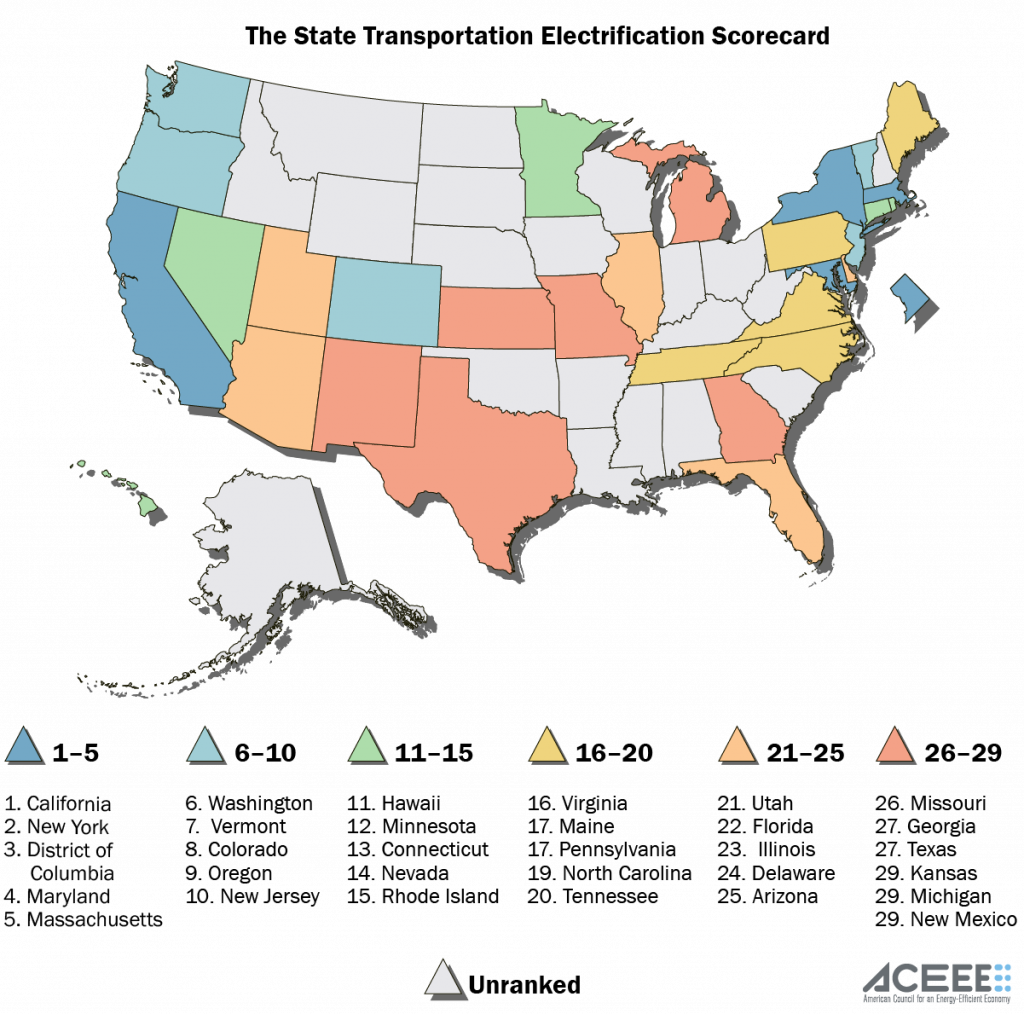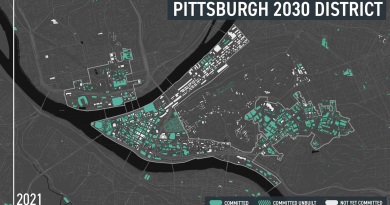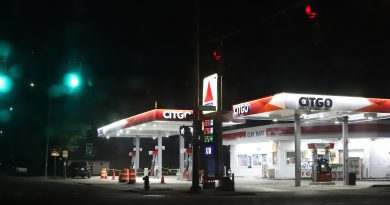ACEEE Scorecard: Michigan is Behind The Times? Again!?
The American Council on Energy-Efficient Economy came out with a report today that compared each state’s progress toward vehicle electrification and electric vehicle adoption. California is leading the pack– no surprise there. What was surprising, though, was that Michigan, the burning center of the automotive galaxy, was one of the last-placing contestants (29th– 20 states were not rated). California, the report said, is the only state
“[…] to set deadlines for electrifying transit buses, heavy trucks, and commercial vehicles. The state is also one of few to offer assistance for lower-income drivers replacing older, high-polluting cars with zero- or near-zero-emissions vehicles, and it plans to deploy chargers in economically distressed and environmental justice communities.”

Toward An Electric Mitten
This shouldn’t really be surprising to anyone who lives in Michigan if you’ve seen our state’s interpretation of “progress,” which usually means “a bigger truck with a more responsive infotainment system that drives with less lower economy on more road to the new strip mall, which is bigger and farther north of 23 Mile Rd. than the last strip mall.” But it’s kind of surprising in thinking about the auto industry’s push for electrification. GM just announced last week its push for complete electrification of all new vehicles by 2035— that’s huge for electric vehicle adoption. The automaker sells eight million cars each year. Complete electrification represents eight million new massive batteries. It also represents the opportunity to build a new power grid, basically from scratch.
How were states scored?
Common trends were financial incentives for electric vehicle adoption. Another growing practice, found in 27 states, was incentives for electric delivery vehicles and trucks. The lowest-scoring category were states that worked to advance EV adoption in lower-income areas. This is an important issue as there’s a large overlap between lower-income areas and areas specifically threatened with environmental health issues. (I think about this every day when I see the plumes of steam coming off Zug Island or from the Marathon Refinery– our air in Southwest Detroit is terrible, but it gets much worse the farther southwest you go). Time-of-use pricing for higher-intensity, Level 2 charging was identified in 36 states.
The most common denominator?
48 states had used– or were using- federal funds to buy electric buses for transit agencies. This is a hot topic in Detroit, where DTE is reluctant to install expensive infrastructure for energy-intensive electric bus charging for the city (more on this soon). This number is encouraging given that this all represents at least incremental steps made under probably the most reactionary presidential administration in US history. Planners and practitioners have high hopes for the incoming Secretary of Transportation in the new administration.
We aren’t where we need to be in the Midwest. But it’s great to have this resource to think about where we can go from here. Electric vehicle adoption and electrification are going to be key priorities in the next decade. As the auto industry retools its own production, we have to think about how we can effect change at local and regional levels as well. Chargers are one thing– decarbonizing the power grid is another conversation that can happen at the same time.
Check out ACEEE for more on the report. Follow our series on mobility and infrastructure. As always, reach out on Twitter @handbuiltcity if you have any questions or comments!




